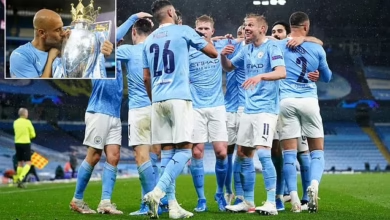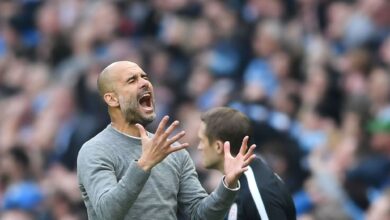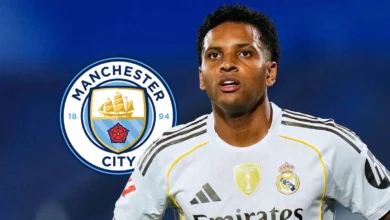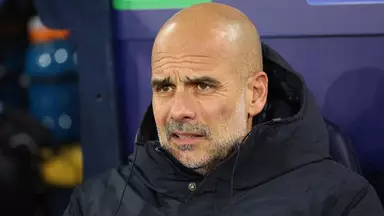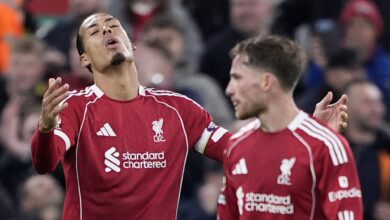Man City to sell stars as transfer plan revealed
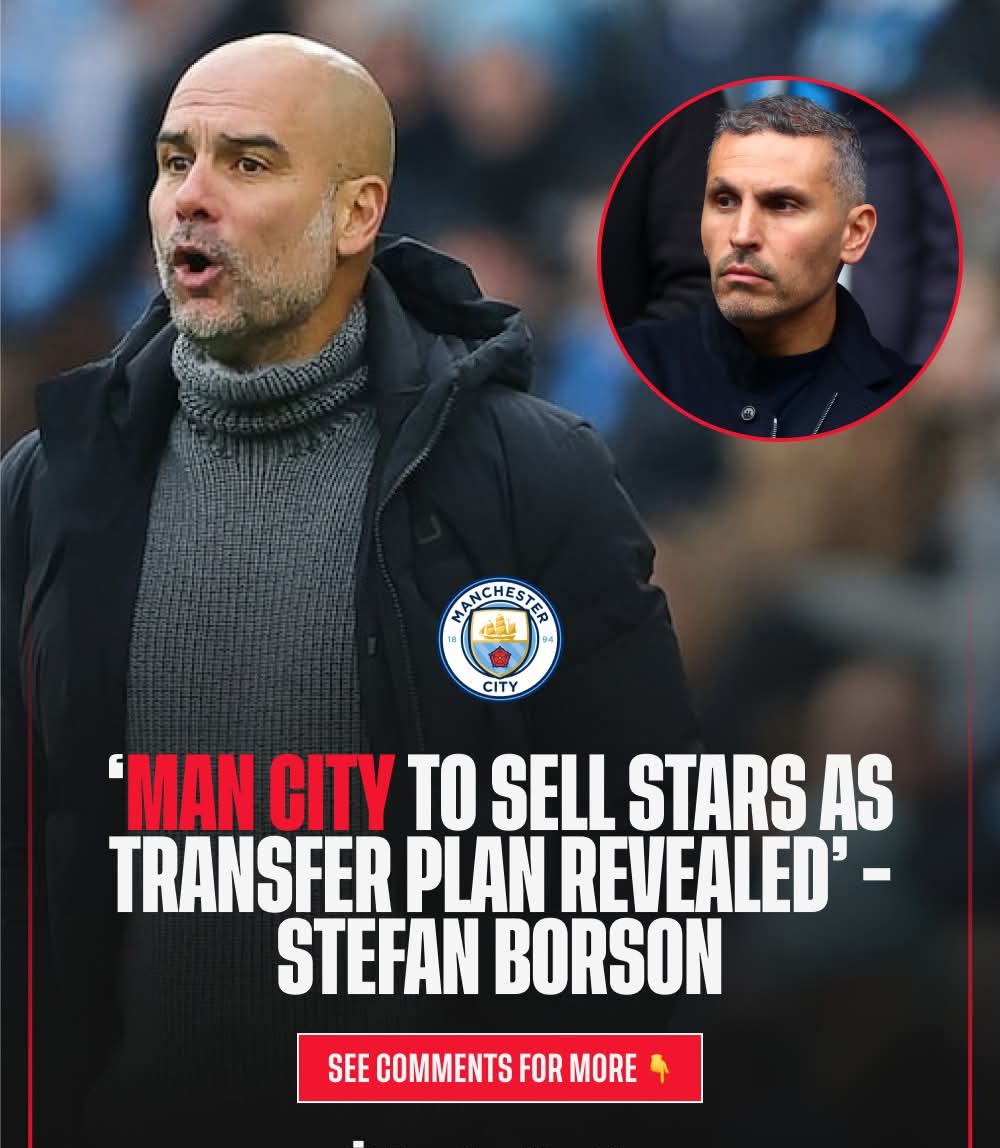
Manchester City finds itself at a crossroads following what can only be described as a turbulent 2024-25 season. The Sky Blues, under the stewardship of Pep Guardiola, have dominated English football for over a decade, securing ten league titles and establishing themselves as one of Europe’s premier football clubs. However, the recently concluded campaign has exposed vulnerabilities that demand immediate attention and strategic intervention.
Despite a late surge in form that secured a third-place finish in the Premier League, the season will be remembered as one of disappointment for the Etihad faithful. The absence of silverware for the first time in recent memory has sent shockwaves through the club hierarchy, with the early exit from the Club World Cup at the hands of Al-Hilal serving as a particularly painful reminder of the work that lies ahead.
The summer transfer window has already witnessed significant activity from City, with the club investing approximately £115 million in three promising additions: Tijjani Reijnders, Rayan Cherki, and Rayan Ait-Nouri. These acquisitions represent a clear statement of intent from the Manchester outfit, signaling their determination to return to the summit of both domestic and European football.
However, according to former Manchester City financial adviser Stefan Borson, the club’s transfer business is far from complete. In an exclusive interview with Football Insider, Borson revealed that City’s ability to continue strengthening their squad may be contingent upon their success in offloading existing players. This revelation has sparked intense speculation about which stars might be sacrificed as part of Guardiola’s ambitious rebuild.
The modern football landscape has become increasingly complex from a financial perspective, with clubs operating under the watchful eye of Financial Fair Play regulations and sustainability rules. Manchester City, like their contemporaries, must navigate these treacherous waters while attempting to maintain their competitive edge. The club’s recent investment of £115 million represents a significant commitment, but it may not be sufficient to address all the areas requiring attention.
Stefan Borson’s insights into the club’s financial strategy provide a fascinating glimpse into the intricate calculations that drive modern football transfers. His assertion that City must sell before they can buy reflects a broader trend affecting elite clubs across Europe. The days of unlimited spending appear to be behind us, replaced by a more measured approach that prioritizes sustainability and compliance with regulatory frameworks.
The comparison drawn between Manchester City, Manchester United, and Liverpool highlights the universal nature of these challenges. All three clubs, despite their considerable resources, find themselves constrained by the need to balance their books and demonstrate fiscal responsibility. This reality has fundamentally altered the dynamics of the transfer market, with clubs increasingly forced to adopt a more strategic approach to squad building.
Central to Manchester City’s transfer strategy is the vision of Pep Guardiola, the Spanish mastermind who has revolutionized the club’s playing style and mentality. Guardiola’s warning that he will quit the club if forced to work with an oversized squad next season has added another layer of complexity to the summer’s planning. The manager’s preference for a lean, focused group of players reflects his meticulous approach to squad management and his belief in quality over quantity.
This philosophical stance has significant implications for the club’s transfer strategy. Rather than accumulating talent for the sake of depth, Guardiola seeks to create a cohesive unit where every player understands their role and contributes meaningfully to the team’s objectives. This approach demands difficult decisions about which players to retain and which to release, particularly when dealing with fringe players who may not fit into the manager’s long-term plans. The rebuild at the Etihad Stadium represents more than just a refresh of personnel; it signifies a fundamental reassessment of the club’s direction and priorities. Guardiola’s involvement in this process ensures that every decision will be made with tactical considerations at the forefront, rather than purely financial or commercial motivations.
Manchester City’s current squad presents a fascinating study in contrasts. On one hand, they possess world-class talent capable of competing with anyone in European football. On the other, certain positions and players have failed to meet the exacting standards set by the club’s recent success. The challenge facing the management team is identifying which players can contribute to the next phase of the club’s evolution and which represent obstacles to progress.
The three new signings – Reijnders, Cherki, and Ait-Nouri – provide clues about the areas Guardiola and the recruitment team have prioritized. Tijjani Reijnders, the Dutch midfielder, brings creativity and work rate to the center of the park. His ability to operate in multiple positions makes him an ideal addition to Guardiola’s tactical system. Rayan Cherki, the French forward, offers pace and unpredictability in the final third, while Rayan Ait-Nouri provides defensive solidity and attacking threat from the left-back position. These acquisitions suggest a focus on youth, versatility, and technical ability – hallmarks of successful Guardiola teams. However, their integration into the squad may require the departure of existing players to create space and maintain the delicate balance that the manager demands.
While Manchester City has not officially announced any departures, speculation continues to swirl around several high-profile players who may find themselves surplus to requirements. The club’s need to generate funds through sales means that even established stars are not immune from consideration. The challenge lies in balancing the desire to maximize transfer fees with the need to maintain squad quality and depth.
Several factors will influence which players are ultimately shown the exit door. Age, injury history, wage demands, and tactical fit will all play crucial roles in the decision-making process. Players approaching the twilight of their careers may be deemed expendable, particularly if younger alternatives are available. Similarly, those whose playing styles do not align with Guardiola’s evolving tactical approach may find themselves on the periphery.
The James McAtee situation provides an interesting case study in the club’s approach to player departures. The 22-year-old midfielder, who captained England to victory at the Under-21s European Championships, has attracted interest from Nottingham Forest and several German clubs. According to recruitment expert Mick Brown, McAtee is likely to favor a move to the Bundesliga, with Borussia Dortmund, RB Leipzig, and Bayer Leverkusen all monitoring his situation.
McAtee’s preference for a move to Germany reflects a broader trend in modern football, with the Bundesliga increasingly attractive to young English talent. The German league’s reputation for developing players and providing opportunities for growth makes it an appealing destination for ambitious youngsters seeking regular first-team football.
For Manchester City, McAtee’s departure would represent both a loss and an opportunity. While the club would be saying goodbye to a promising talent, they would also be creating space in the squad and generating funds for further investment. The decision to allow McAtee to leave reflects the difficult choices facing the club as they attempt to balance immediate needs with long-term planning.
The interest from Borussia Dortmund, RB Leipzig, and Bayer Leverkusen demonstrates the high regard in which McAtee is held across Europe. These clubs have established reputations for developing young talent and providing pathways to the highest level of football. For McAtee, a move to Germany could represent the perfect opportunity to establish himself as a regular starter and continue his development away from the intense pressure of the Premier League.
The decisions made by Manchester City this summer will have far-reaching consequences beyond the confines of the Etihad Stadium. The club’s approach to the transfer market will influence the strategies of their competitors and shape the broader landscape of English football. Their success or failure in the transfer market could determine whether they return to the summit of the domestic game or face another season of disappointment.
The interconnected nature of the modern transfer market means that City’s decisions will create opportunities for other clubs. Players deemed surplus to requirements at the Etihad may find new homes at rival clubs, potentially strengthening the competition. Conversely, the club’s pursuit of new targets may drive up prices and create bidding wars that benefit selling clubs.
The psychological impact of the club’s transfer activity cannot be underestimated. Successful signings can boost morale and create positive momentum heading into the new season. Conversely, high-profile departures may unsettle the squad and create uncertainty about the club’s direction. The management team must carefully balance these considerations as they navigate the complexities of the transfer market.
The current transfer strategy represents a departure from Manchester City’s previous approach to squad building. In the past, the club has been willing to invest heavily in multiple signings during single transfer windows, creating competition for places and ensuring depth across all positions. However, the current emphasis on sales before purchases suggests a more cautious approach driven by regulatory constraints and financial prudence.
This shift in strategy may ultimately benefit the club in the long term. By focusing on quality over quantity and ensuring that every signing serves a specific tactical purpose, City can create a more cohesive and efficient squad. The emphasis on player development and the integration of academy graduates also aligns with modern trends in football management.
However, the strategy is not without risks. The failure to adequately replace departed players could leave the squad short in key areas, particularly if injuries or suspensions affect the remaining options. The pressure to sell may also force the club to accept lower fees than they would prefer, potentially undermining their negotiating position in future transfer windows.
Manchester City’s approach to youth development will play a crucial role in their transfer strategy. The club’s academy has produced several talented players in recent years, but the pathway to the first team remains challenging. The departure of players like McAtee may create opportunities for other academy graduates to step up and fill the void.
The club’s investment in youth development facilities and coaching staff demonstrates their commitment to nurturing homegrown talent. However, the integration of academy players into the first team requires careful planning and patience. The pressure to achieve immediate success can conflict with the long-term development of young players, creating tension between short-term needs and long-term planning.
The success of players like Phil Foden and Cole Palmer (before his departure to Chelsea) demonstrates the potential rewards of investing in youth development. These players not only contribute on the pitch but also provide financial benefits through their homegrown status and potential transfer value. The challenge facing Manchester City is creating an environment where young players can flourish while maintaining the high standards expected at the club.
The transfer market has become increasingly competitive, with clubs from across Europe vying for the same pool of talented players. Manchester City’s reputation and financial resources provide them with advantages in this competitive landscape, but they are not guaranteed success. The club must navigate the complex web of agent demands, player preferences, and regulatory constraints that characterize modern football transfers.
The emergence of new financial powerhouses in various leagues has intensified competition for top talent. Clubs in Saudi Arabia, Major League Soccer, and other emerging markets are now capable of offering substantial financial packages that can rival those available in Europe. This trend has created new dynamics in the transfer market and forced traditional powerhouses to reassess their strategies. Manchester City’s ability to adapt to these changing market conditions will be crucial to their success. The club’s global reach and commercial appeal provide them with resources that many competitors cannot match, but these advantages must be leveraged effectively to secure their preferred targets.
Pep Guardiola’s influence on Manchester City’s transfer strategy cannot be overstated. The Spanish manager’s tactical philosophy and attention to detail drive every aspect of the club’s recruitment process. His preference for technically gifted players who can adapt to multiple positions aligns with the club’s broader strategic objectives.
Guardiola’s warning about working with an oversized squad reflects his experience and understanding of team dynamics. The manager recognizes that maintaining harmony within a large group of elite players requires exceptional management skills and can create challenges that ultimately undermine performance. His preference for a smaller, more focused squad demonstrates his confidence in his ability to maximize the potential of his chosen players. The manager’s involvement in the transfer process ensures that every signing is made with tactical considerations at the forefront. This approach may limit the club’s options in some cases, but it also increases the likelihood that new signings will successfully integrate into the team’s playing style.
The specter of Financial Fair Play regulations looms large over Manchester City’s transfer activities. The club has faced scrutiny from regulatory bodies in the past and must demonstrate compliance with sustainability rules. This reality has forced the club to adopt a more measured approach to spending and emphasize the importance of player sales in funding new acquisitions.
The interconnected nature of income and expenditure in modern football means that every transfer decision has implications for the club’s overall financial position. The sale of high-profile players can generate significant funds that can be reinvested in new signings, while excessive spending without corresponding sales may trigger regulatory intervention. Manchester City’s financial expertise and experience in navigating these regulations provide them with advantages over less sophisticated competitors. However, the club cannot afford to be complacent, and every transfer must be carefully evaluated for its impact on the club’s long-term financial health.
As the summer transfer window progresses, Manchester City faces crucial decisions that will shape their immediate future and long-term prospects. The club’s ability to successfully navigate the complex dynamics of player sales and acquisitions will determine whether they can return to the summit of English football or face another season of disappointment. The integration of new signings Reijnders, Cherki, and Ait-Nouri will be crucial to the team’s success. These players must adapt quickly to Guardiola’s tactical system and the intense pressure of competing for Manchester City. Their success or failure will influence the club’s approach to future transfer windows and shape perceptions of the recruitment strategy.
The departure of established players will create opportunities for others to step up and assume greater responsibility. The club’s depth and quality of squad will be tested, particularly if injuries or suspensions affect key players. The management team must ensure that the squad remains competitive while undergoing significant changes.
Manchester City’s summer transfer strategy represents a fascinating case study in modern football management. The club’s need to balance regulatory compliance, financial sustainability, and competitive success creates a complex web of considerations that must be carefully navigated. Stefan Borson’s insights into the club’s approach provide valuable context for understanding the decisions that will shape the team’s future.
The emphasis on player sales before new acquisitions reflects the broader challenges facing elite clubs in the current regulatory environment. Manchester City’s ability to successfully execute this strategy will be crucial to their return to the summit of English football. The club’s investment in new talent, combined with the potential departure of existing players, creates both opportunities and risks that must be carefully managed.
Pep Guardiola’s vision for the squad and his demands for a lean, focused group of players will drive the decision-making process. The manager’s experience and tactical acumen provide the club with a clear direction, but the execution of this vision will require careful planning and skillful negotiation in the transfer market.
As the summer progresses, Manchester City fans will watch with interest as the club’s transfer strategy unfolds. The decisions made in the coming weeks will determine whether the Sky Blues can return to their winning ways or face another season of disappointment. The stakes could not be higher, and the pressure to succeed has never been greater.







